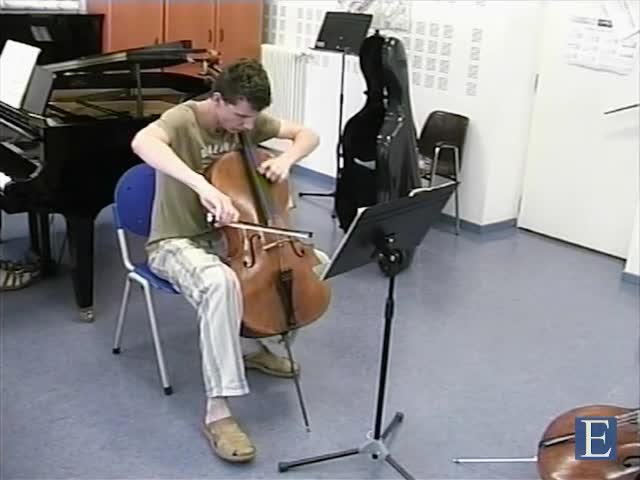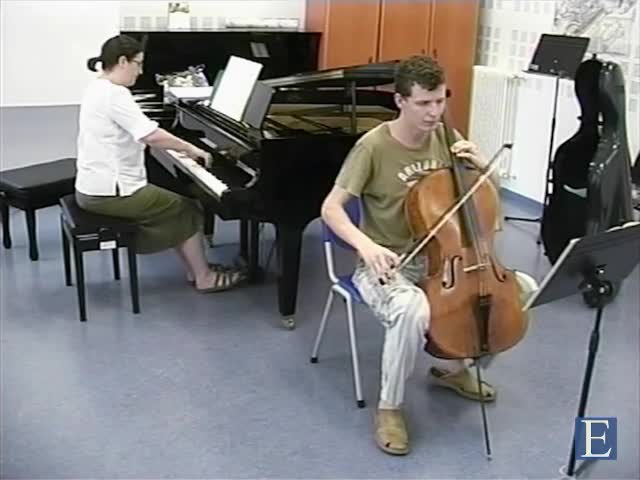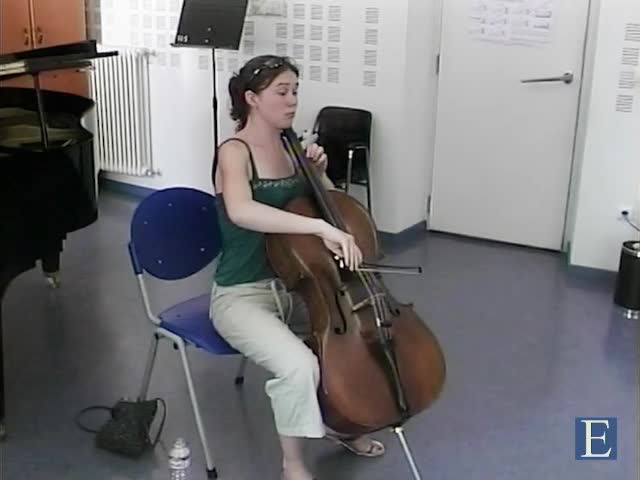Tsuyoshi Tsutsumi’s father, a versatile player of the violin, viola and cello, taught all three instruments in local schools. Tsuyoshi began the violin at the age of six, but changed to cello on hearing a half- size instrument being demonstrated to his father by a dealer. Trained by Japan’s greatest teacher of the time, Hideo Saito (founder of the Toho Conservatory), whose regime included rigorous study of the Bach Cello Suites, Tsutsumi made his debut at the age of twelve with the Tokyo Philharmonic Orchestra playing Saint-Saëns’s Cello Concerto No. 1. After this he was invited to give many concerts with Japan’s leading orchestras and won a number of prizes including the Mainichi Music Competition; at the age of eighteen he made his first international tour with the NHK Symphony Orchestra, performing in India, Russia and Europe. Tsutsumi obtained a Fulbright Scholarship to study with János Starker at Indiana University; Starker encouraged him to express more of his individual personality (a matter which apparently did not come naturally, given his reserved cultural upbringing). This set Tsutsumi upon an international career, being hailed as a ‘discovery’ in the West when he won the International Casals Competition in 1963. Subsequently he has appeared with Japanese orchestras around the globe, including with the New Japan Philharmonic at Carnegie Hall and in London and Paris with the Tokyo Philharmonic. He has given premieres of a number of works including Miyoshi’s Cello Concerto with the Tokyo Yomiuri Orchestra and Takemitsu’s Orion and Pleiades with the Tokyo Philharmonic, which he performed on the occasion of the composer’s sixtieth birthday. Tsutsumi is a founder member of Quartet Canada, a visiting professor at the University of Western Ontario, a guest professor at the Toho Conservatory and a Professor of Music at Indiana University. Tours with Western orchestras have seen him collaborate with the English Chamber and Leipzig Gewandhaus Orchestras, the Accademia di Santa Cecilia and the National Symphony Orchestra (appearing with Rostropovich in 1992).
On record Tsutsumi comes across as a reserved yet thoughtful interpreter by default, with a restrained modern style and a delicate use of vibrato, evident in his cerebral performances of Bach’s Cello Suite No. 2 (1991) and Kodály’s Solo Sonata (1986), for example. In certain repertoire he can also be animated and characterful – the Granados and Schumann items here (2009) demonstrate his ability to exercise stylistic versatility. Occasionally unstable intonation suggests that Tsutsumi lacks some of the technical confidence of better-known figures, but the sense of profound devotion to the music he plays marks him out as an interpreter of interest and insight. This is displayed further by a performance of Jack Behrens’s Dialogue (1982), which testifies to his abilities in more contemporary and esoteric repertory. His live 1960 USSR performance of Haydn’s D major concerto is technically blemished and demonstrates an idiosyncratic abundance of molto-legato phrase-arch shaping and languid tempi; the cadenzas bring forth rather more of an extrovert character with committed virtuosity, and the playful finale is entertaining.
Indicative of his commitment to training further generations of cellists is Tsutsumi’s participation in the Suzuki Cello Method: he has provided all the recorded material that accompanies the famous series of tutor books.
© Naxos Rights International Ltd. — David Milsom (A–Z of String Players, Naxos 8.558081-84)



